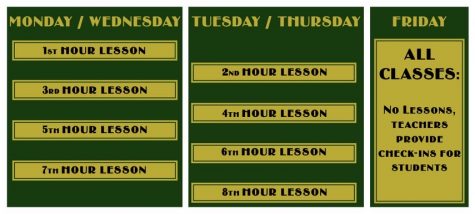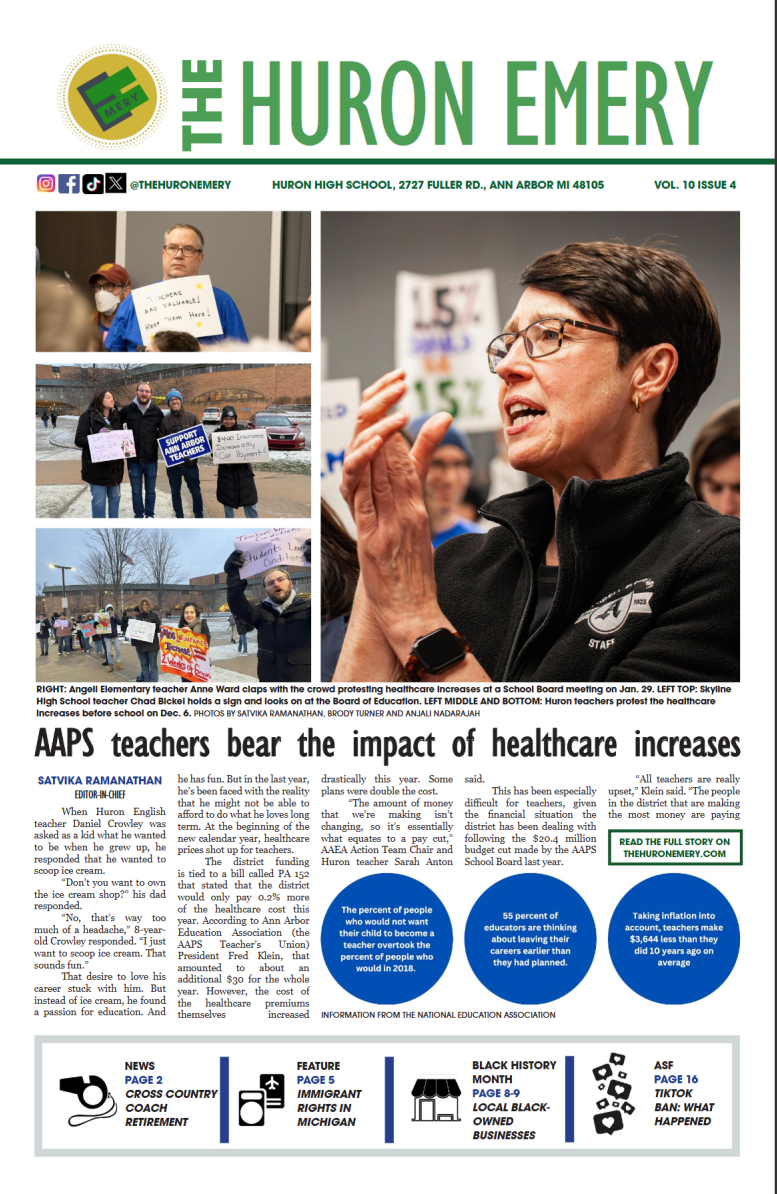The time to transition to block schedules is now
A sample of what block scheduling could look like if Huron were to start.
April 14, 2020
There is no denying that things are changing now. As a society and as a school we have had to adapt to the exceptional circumstances that the COVID-19 pandemic has presented. Among the changes made, Huron has temporarily transitioned to a block schedule during distance learning to offer students increased flexibility for the time being. But why stop now, when block scheduling can be a permanent solution to many everpresent issues.

My eighth-grade year, my middle school, The University of Chicago Laboratory Schools, adopted a new block schedule. Although I only experienced it for one year, I have extremely fond memories. Being able to have long, in-depth discussions in English class. Completing art projects and cooking dishes with less total set-up and cleaning time. Building a wooden car in science class. This could all easily be part of the reality for Huron students with a block schedule. In essence, block schedules are when students visit half their classes each day for a longer period of time (typically around an hour and a half), every other day.
Block schedules save a lot of time because far less time is wasted during passing periods and settling into each class. This means that it is possible to have longer lunches and more class time while still preserving start and end times and passing period lengths. Longer, less frequent class periods mean that less time is wasted at the start and end of classes for cleaning and setting up, which is particularly beneficial for classes like art and cooking. Teachers would also no longer be limited by 50-minute classes and could conduct a wider range of activities, such as debates or science labs.
There are several variations of block schedules which can be tailored to the needs of the particular school. For instance, at Community High School, there is time allotted for regular assemblies or ways to distribute information among students. This could also be converted to an eighth hour which would allow students to take one more class each semester and perhaps take a class they have always wanted to, but couldn’t because it didn’t fit into their schedule previously. I am also familiar with the somewhat unique block schedule of Walter Payton College Preparatory in Chicago. This schedule includes “flex days” every other week (typically Wednesdays) where students elect seminars to attend such as clubs, playing various games or study hall. This type of day can be used in place of the ineffective half days and additional days as well.
Students’ ability to focus is often a major concern when bringing up block schedules, and it does require major adjustments from students and teachers. At first, I too was not a fan of 90-minute classes and found it difficult to be productive for the entire time, but after a few months I acquired a strong liking for the new schedule and found it increasingly easier to pay attention during class. I also really appreciated the fact that I had two days to complete my homework, so I could easily adjust my homework schedule if I was very busy on a specific day, which can help relieve stress from students across the board. Also remember that this was a middle school, so if a group of 12 year-olds managed to focus for 90 minutes, high schoolers can as well.
Renovating the Huron bell schedule from top to bottom is a process, and takes a lot of readjustment on the part of students, teachers and staff. However, as evidenced by the situation we are in now, it is possible. While there is a learning curve for teachers and students to conduct lessons virtually, we are able to adapt and permanent block schedules would require less changes than distance learning did. I encourage students to appreciate the current form of a block schedule they have, and to consider how a long-term form of this would impact them. This is an era of potential change, and at this point, returning back to how things were would be regressing.














